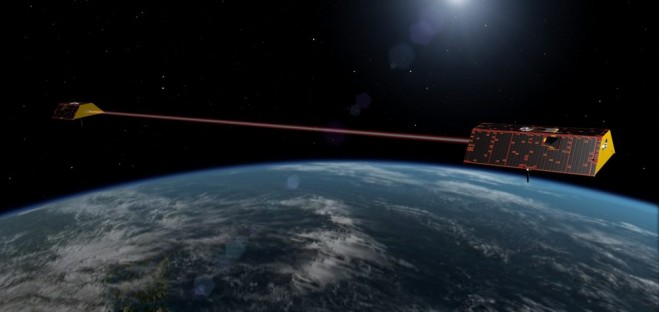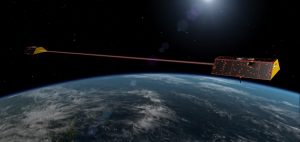

An illustration of NASA’s Gravity Recovery and Climate Experiment Follow-On (GRACE-FO) spacecraft. (Credit: NASA/JPL-Caltech)
The Gravity Recovery and Climate Experiment Follow-On (GRACE-FO) mission team plans to switch to a backup system in the Microwave Instrument (MWI) on one of the twin spacecraft. Following the switch-over, GRACE-FO is expected to quickly resume science data collection.
A month after launching in May 2018, GRACE-FO produced its first preliminary gravity field map. The mission has not acquired science data since mid-July due to an anomaly with a component of the Microwave Instrument on one of the GRACE-FO spacecraft. The mission team is completing its investigation into the cause of the anomaly.
The primary science objective of GRACE-FO—like its predecessor GRACE, which operated from 2002 to 2017—is to track how water is redistributed on Earth, by producing highly accurate, monthly gravity field maps. Measurements of changes in Earth’s gravity field provide measurements of mass change and enable unique insights into Earth’s changing climate, Earth system processes such as droughts and sea-level changes, and the impacts of human activities on water resources.
There are no upcoming events.
